News
SCLT Program Features Native American Music
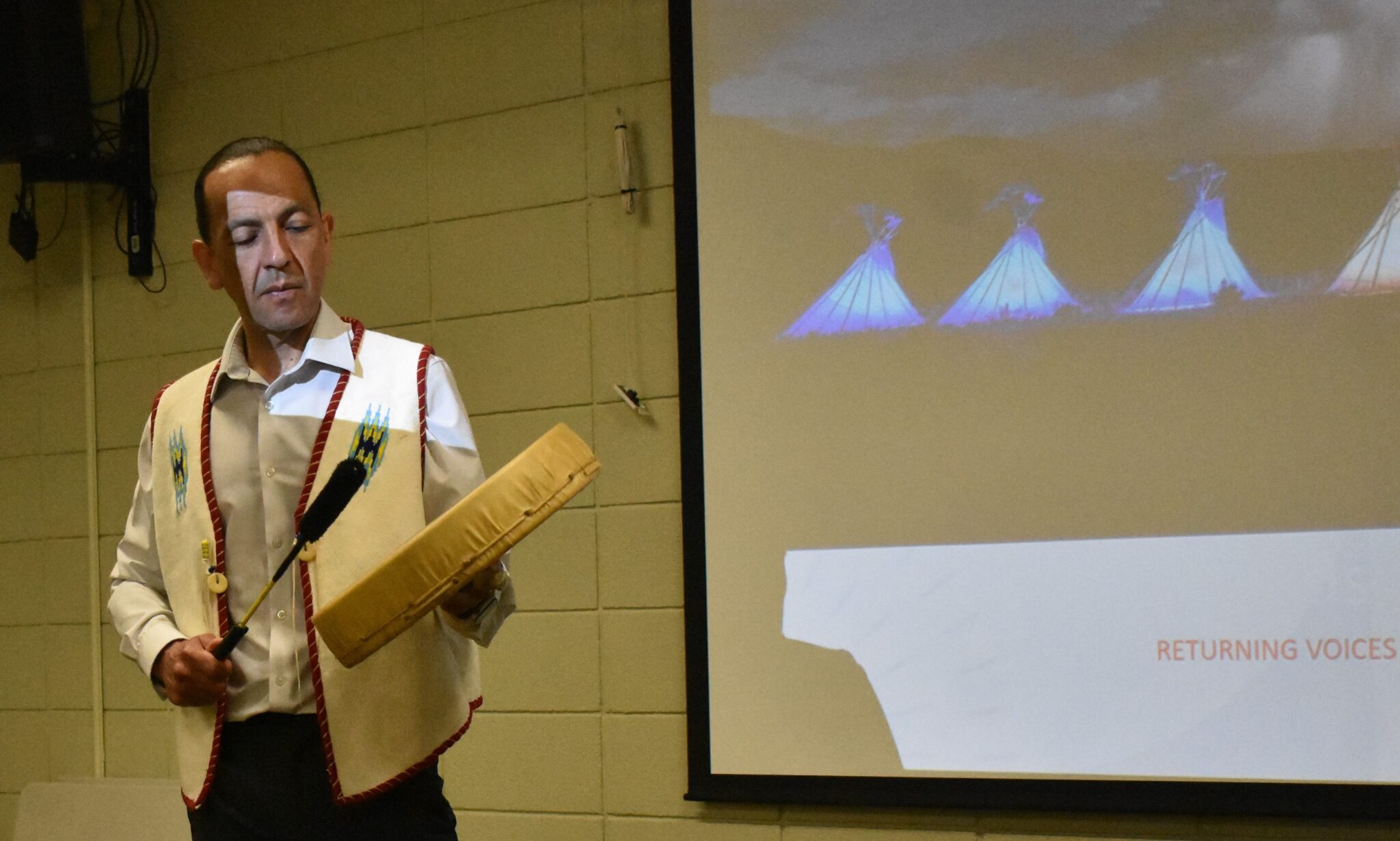
On May 16 at the Tongue River Valley Community Hall in Dayton, the Sheridan Community Land Trust presented a program with Dr. Shane Doyle. Doyle is an Apsáalooke, and sings traditional Crow songs. His presentation was about the cultural significance of the Northern Plains style songs and the dances that accompany them. He also presented the program Messages from Medicine Wheel Country at Sheridan College in 2022.
Brad Bauer, SCLT, introduced the speaker, who traveled down from Bozeman, Montana. As Doyle put it, he came along, “The Bozeman Trail, now known as Interstate 90. I think the original Bozeman Trail would have been a more direct route.”
He said that in this region, consisting of Montana, Wyoming, and the Dakotas, the Plains Indian style music is one of the culture art forms. He said it was one of the few things that has not been imported into Montana. The clothes we wear, the chairs we sit in, and even much of the material to build our houses, came in from elsewhere.

He talked about other forms of music and where they originated. “Classical music comes from Vienna. That is the heart and soul of the classical world.” There are other great forms of music, like the blues and jazz which we associate with New Orleans, that have swept the nation and the world.
Unlike classical music, jazz and even rock and roll, there is no origin story with Native American music.
He said that some composers have incorporated Native American music into their compositions. Dvořák was one of the first famous classical composers who used the Native American rhythms into his classical music.
One interesting part of the talk was the fact that this music originated in the Northern Plains, in Northern Wyoming, Montana and the Dakotas. He said that no where else is this music found.

He talked about the Crow Fair, held yearly at Crow Agency, Montana, and said that at the center of the Crow Fair is the Powwow, and the center of Powwow is the drum, and it is the ‘heartbeat of the world’. People from all over the world come to Crow Fair.
Doyle started singing the music in high school. He said that at MSU Bozeman, where he went to college, there was an inter-tribal drum group.
“I would like to refer to this as Medicine Wheel Country music,” Doyle said, adding that we all know of the famous Big Horn Medicine Wheel, but there are other Medicine Wheels all around the northern plains.
The Sun Dance is unique to this area. The Nez Perce and the Columbia River tribes don’t use the Sun-Dance, nor do the tribes west of the Dakotas. One reason is that there are no lodge poles.
On one slide, Doyle pointed out the island mountain ranges in Medicine Wheel Country, the Big Horns, the Crazy Mountains, the Judiths, Pryor Mountains and many others. “These are where we find the lodge poles.” Doyle said. There were buffalo as well, and rivers for water. The Native American’s needed the buffalo, the rivers and the lodge poles to live the traditional way of life. In other places there are buffalo and water, but no lodge poles.
He said that in Montana there are seven reservations and 13 tribes. In Wyoming, one reservation and two tribes. Northern Wyoming is just on the cusp of the Medicine Wheel Country. It was this area and these common resources that created this type of music among the tribes.
One slide was a map of the language families on the great plains. He mentioned that the Shoshone language is the Aztecan language, and the Shoshone language is the northern most representation of that language.
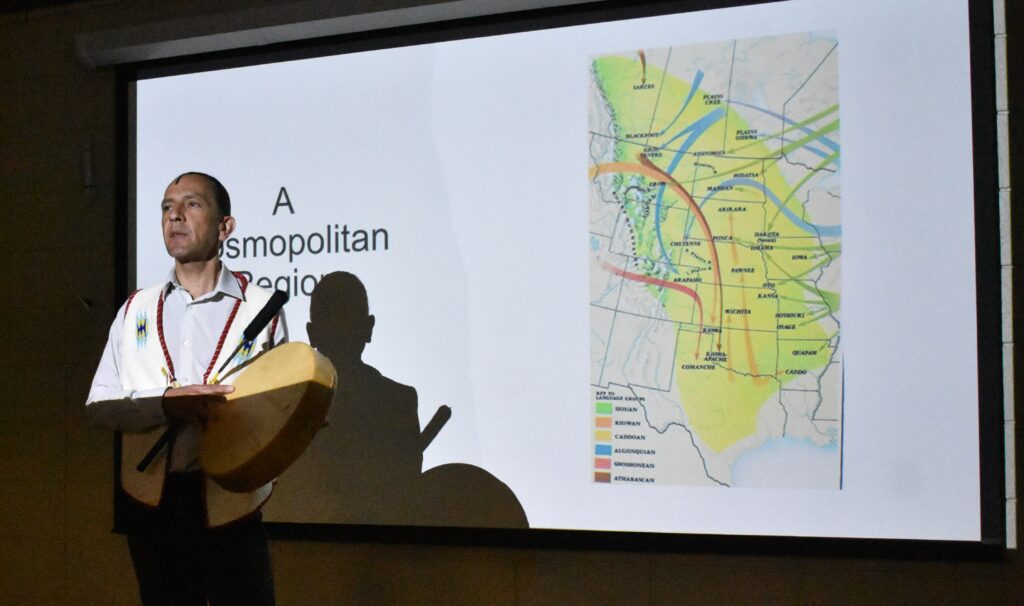
Many of the tribes who settled in this region were from the Great Lakes Region in the Midwest. He said that the Kootenai tribe of Canada and Northern Montana has the only language that is an isolate language, not related to any other Indian group.
Doyle added that one theory is that they are the ones who started this type of music, and the other tribes adopted that music.
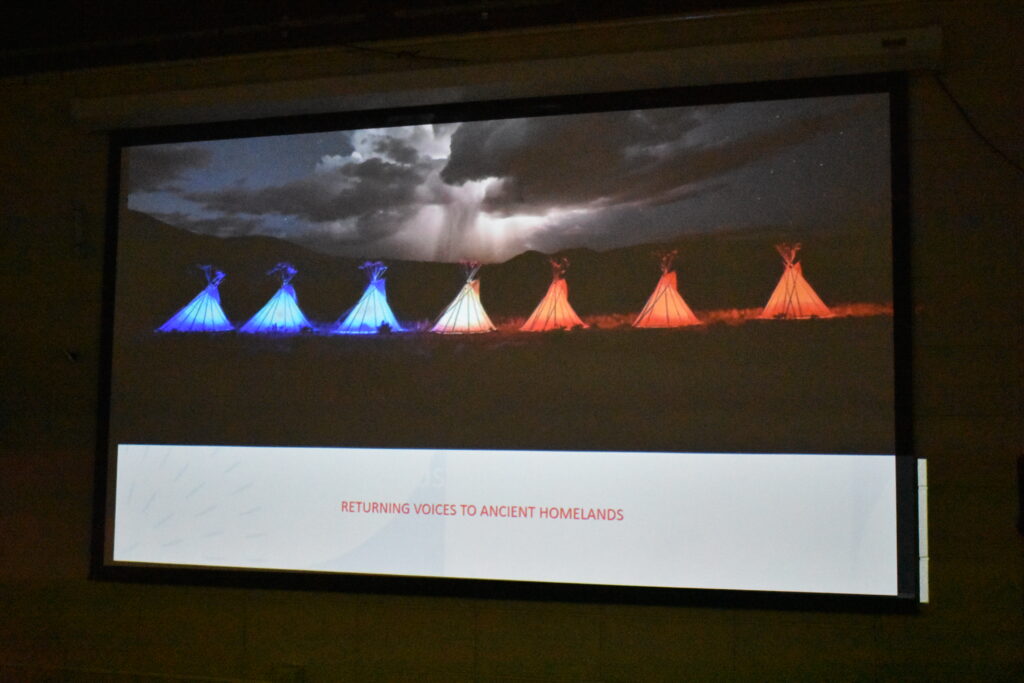
Some tribes used the songs in the sweat lodge ceremony, however the Crow tribe did not.
He talked about the sign language between the tribes that developed here on the Northern Plains as well.
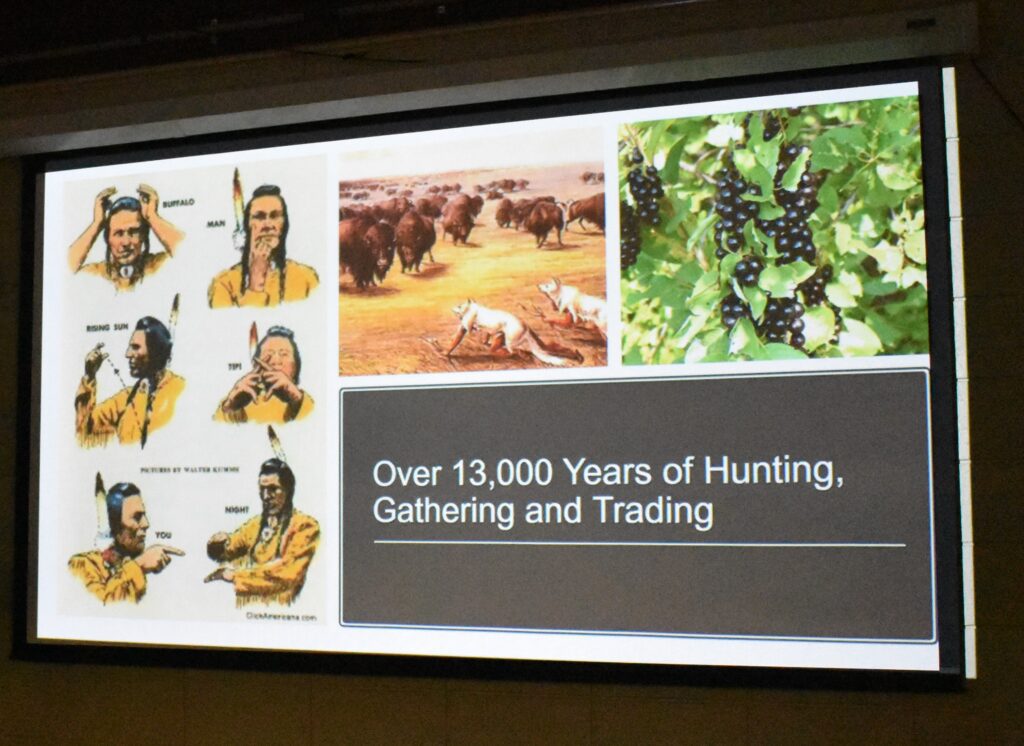
He said that the Crow originally came from the Great Lakes Region, where they had been farmers. But the country in Montana was not as good a place to farm, so they became hunter-gatherers, one of the few communities to do that. He said that in world history this just doesn’t happen, it always goes the other way.
He said Crow tribe named Cloud’s Peak the Extended Mountain. “My adopted family, the Real Bird family, said that term means Mountain of the Future.”
Doyle had a traditional rawhide hand drum that was made by his uncle, who is a part of the Northern Cheyenne Tribe, and the Morning Star is incorporated into each of his drums. The Morning Star is also on the Northern Cheyenne flag.
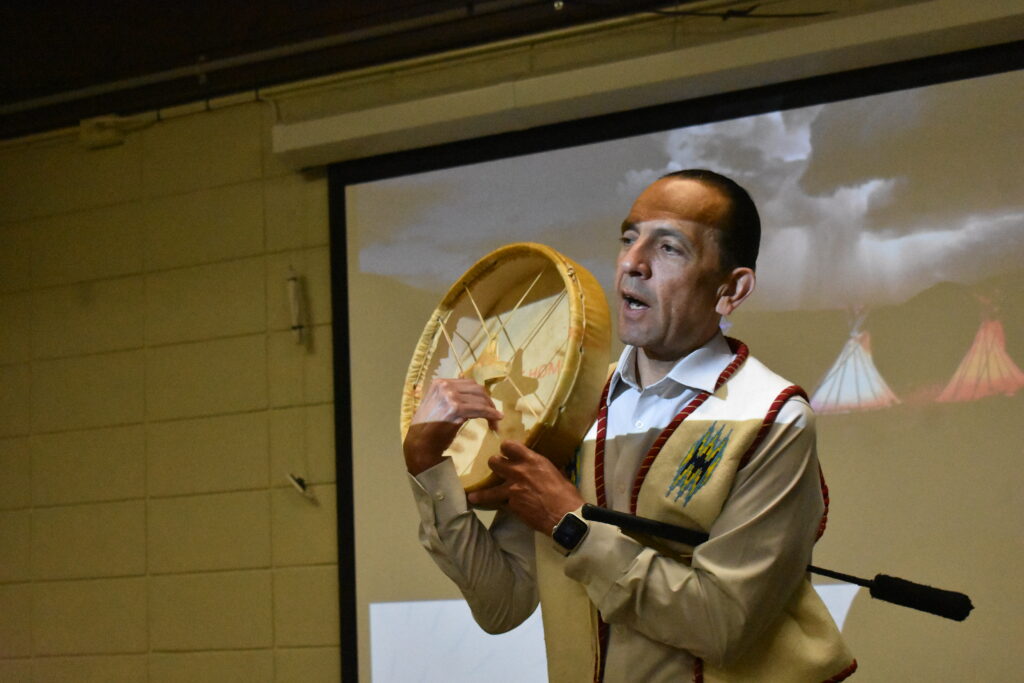
Morning Star was a mythical figure to the Cheyenne and some other tribes in the region. He was kind of like Hercules, his father was the sun and his mother was a human and he had super powers.
Doyle also played and sang some traditional songs as well.
He demonstrated two different drumsticks, and the difference in the sound between the two. One was wrapped in leather, and one had a soft felt tip, which gave a little shorter sound.
He added that if one goes to a Powwow, they might hear this type of music.
With over 35 years of singing in Indian County, he showcased several different types of songs and drum beats and detailed the quality that make the music powerful, balanced and resilient. He talked about how most of the songs don’t have words, but they are understood within the human condition. He added that the music allows you to express emotions that might not be translated into words.
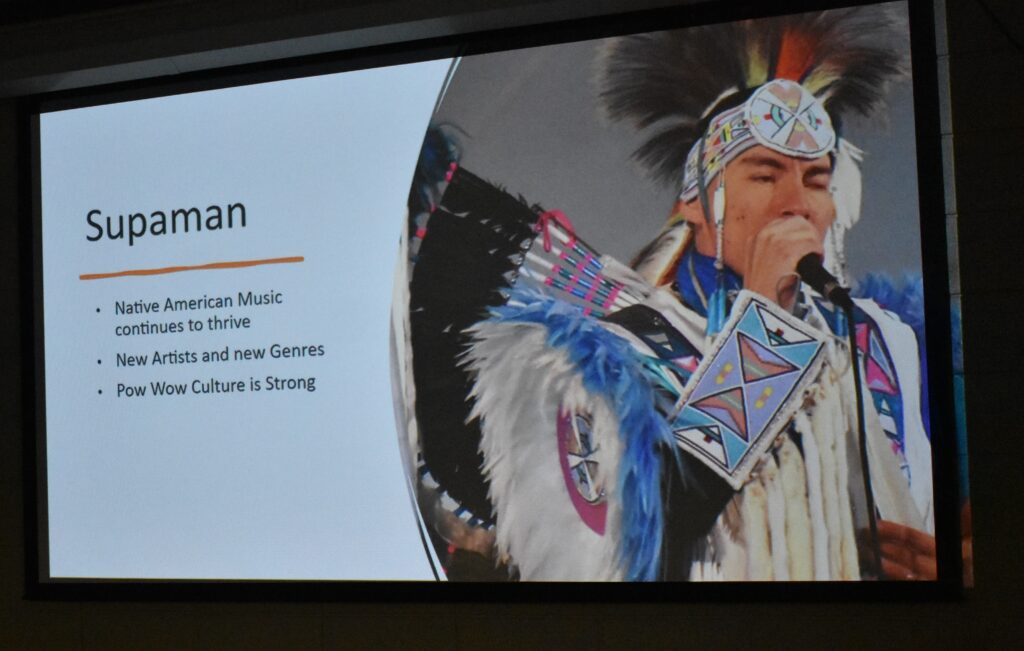
He also talked about a friend of his, stage name Supman, who is a performer and incorporates rap music with Plains Indian style music. His music can be found on his website.
The program was recorded and will be available on the SCLT website.

